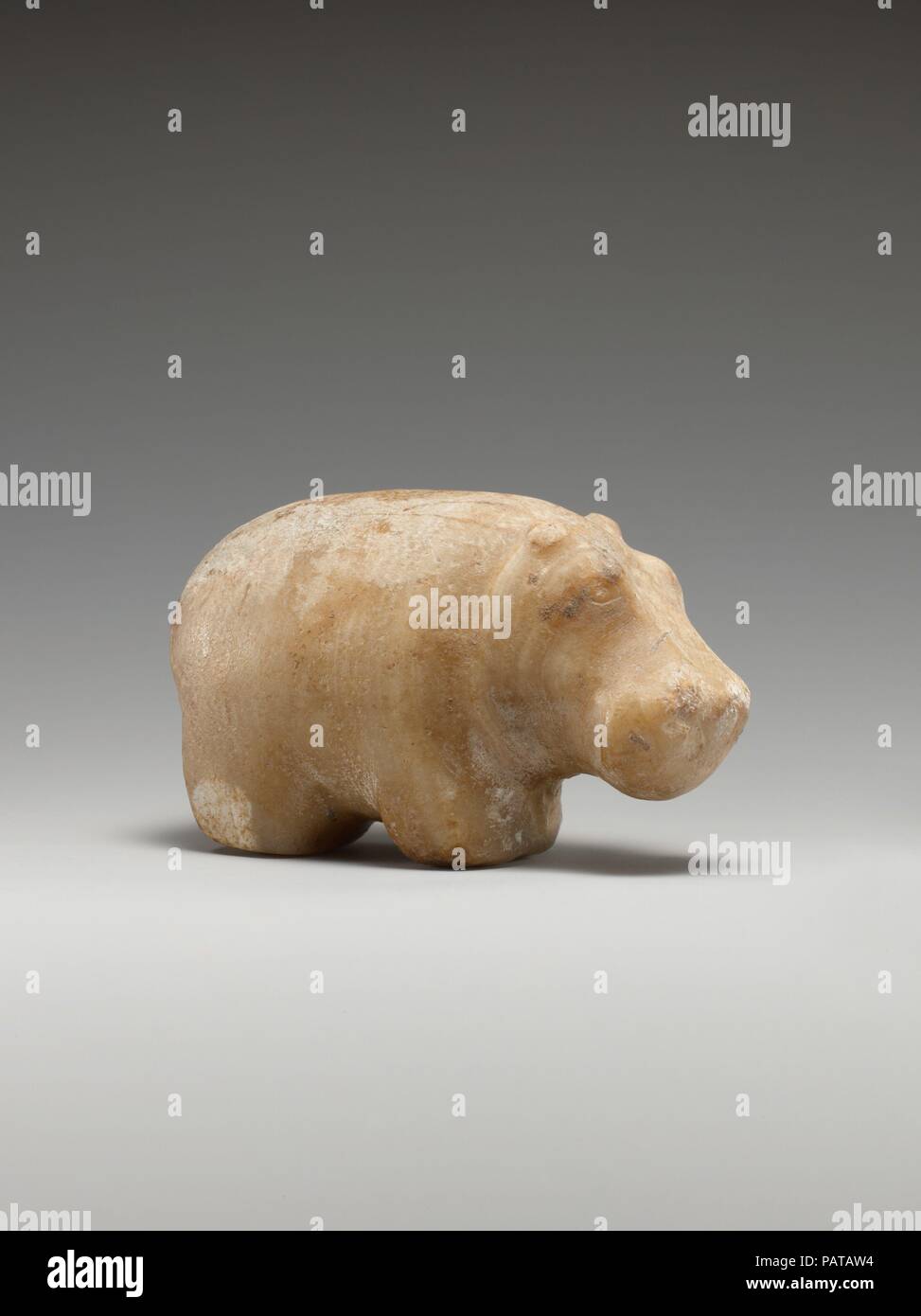Small statuette of a hippopotamus. Dimensions: L. 8.8 cm (3 7/16 in.); H. 5.3 cm (2 1/16 in.). Date: ca. 3100-2649 B.C.. Excavated from a deposit near an early shrine, this figurine of a hippo was most likely a gift to Khentiamentiu, the funerary deity who preceded Osiris at the Abydos temple. The hippo's form is skillfully modeled, employing only a few, well-placed details to convey succinctly the animal's identity. Throughout the Predynastic Period (ca. 4400-3100 B.C.), representations of hippos were placed in tombs and other ritual contexts. This animal was feared and as a result became t

Image details
Contributor:
Album / Alamy Stock PhotoImage ID:
PATAW4File size:
37.8 MB (539.3 KB Compressed download)Releases:
Model - no | Property - noDo I need a release?Dimensions:
3145 x 4200 px | 26.6 x 35.6 cm | 10.5 x 14 inches | 300dpiPhotographer:
AlbumMore information:
This image could have imperfections as it’s either historical or reportage.
Small statuette of a hippopotamus. Dimensions: L. 8.8 cm (3 7/16 in.); H. 5.3 cm (2 1/16 in.). Date: ca. 3100-2649 B.C.. Excavated from a deposit near an early shrine, this figurine of a hippo was most likely a gift to Khentiamentiu, the funerary deity who preceded Osiris at the Abydos temple. The hippo's form is skillfully modeled, employing only a few, well-placed details to convey succinctly the animal's identity. Throughout the Predynastic Period (ca. 4400-3100 B.C.), representations of hippos were placed in tombs and other ritual contexts. This animal was feared and as a result became the subject of hunting scenes. Others, however, were depicted pregnant and so may have served as fertility symbols. In this example, neither function appears likely. Here the hippo may have symbolized the Nile River, a critical feature of the ancient Egyptian's world. Museum: Metropolitan Museum of Art, New York, USA.